On Air Now
X-Posure with John Kennedy 11pm - 2am
11 July 2024, 10:00

It’s 55 years since Major Tom lost contact with Ground Control: but why did it take six years for this classic Bowie song to get to Number 1?
On 11th July 1969, David Bowie released a new single: Space Oddity. It was to be the song that kickstarted a dazzling career as a rock superstar, pioneering musician, actor and cultural icon.
Taking the shape of a conversation between an astronaut, Major Tom, and his team back on Earth (Ground Control), the song vividly depicts the take-off of a rocket and the experience of floating in the empty vacuum of space. As the song ends, Major Tom loses contact with home and is left drifting in the void, leaving Ground Control to hopelessly repeat: “Can you hear me Major Tom?”.
But Space Oddity could have pegged David Bowie as a one-hit wonder with a novelty song that quickly became dated. How did he get from here to Ziggy Stardust and the Thin White Duke?

David Bowie – Space Oddity (Official Video)
It’s safe to say that by the end of the 1960s, Bowie was less than successful at becoming a major British pop star.
The former David Jones from Bromley had been performing in groups and recording music for the previous five years. He’d released one, self-titled, album in 1967, which had flopped badly. He’d recorded a silly novelty song called The Laughing Gnome, which also did nothing.
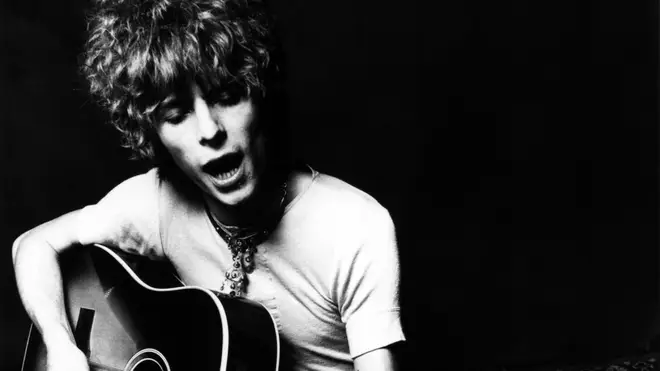
As the final year of the decade dawned, his folk-poetry-performance group Feathers was in the process of disintegrating, following his split with colleague and girlfriend Hermione Farthingale. As a last ditch attempt to get some attention for his protege, Bowie’s manager Kenneth Pitt decided to showcase his songs with a promotional film that featured Feathers - which also included Bowie’s musical partner John Hutchinson - and some solo performances from the singer-songwriter. This would propel Bowie into the big time, thought Pitt.
Filmed at the end of January 1969, the resulting film was titled Love You Til Tuesday and included a new track, written at the request of Pitt - it was called Space Oddity.
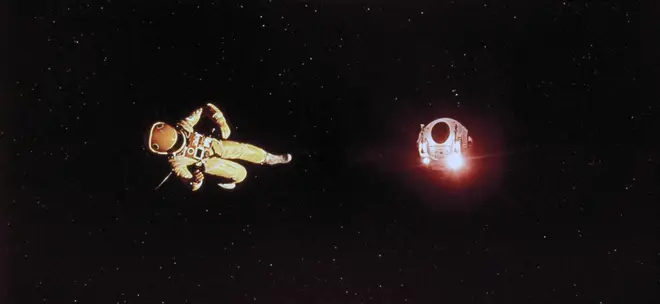
Partly inspired by Stanley Kubrick’s classic movie 2001: A Space Odyssey, which had been released in the UK the previous May, the song was written around the time that the Apollo 8 space mission was taking place. This was the first manned spacecraft to reach the moon and orbit around it: the stage was set for man to set foot on the moon.
Looking back in 2003, Bowie told Bill DeMain of Performing Songwriter: "I was very stoned when I went to see it, several times, and it was really a revelation to me. It got the song flowing."
Space Oddity was written about the fears and loneliness of space travel - the real-life astronauts were taking huge risks leaving and re-entering the Earth’s atmosphere; while 2001 featured an astronaut that was cut adrift from his craft, while another had to find mankind’s destiny in the inky blackness of the cosmos.
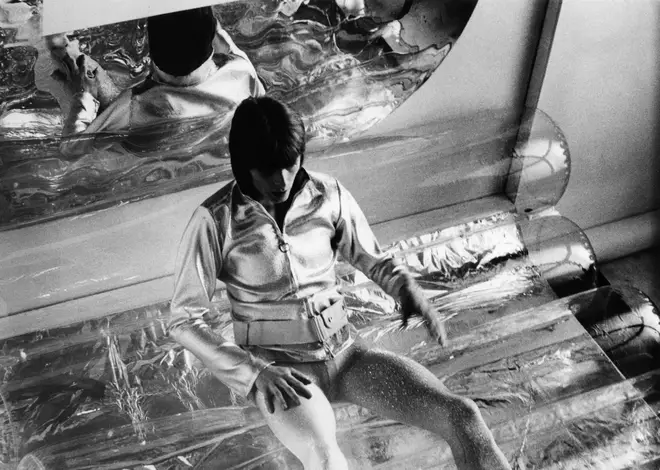
Bowie originally designed Space Oddity as a two-hander with John Hutchinson as “Ground Control” communicating with Bowie as “Major Tom”, the doomed spaceman. In the finished version, Bowie plays both roles - he’d become an expert at taking on different personalities as his career progressed.
In the Love You Til Tuesday version of Space Oddity, Major Tom is kidnapped by some “space maidens” who lead him off for a life of bliss. Very 60s. The sound of the song is far from the epic production that would eventually appear as a single. Take a listen to the Love You Til Tuesday version of Space Oddity here:

David Bowie - Space Oddity (Original Music Video 1969) (HD)
Unfortunately, Kenneth Pitt couldn’t get any TV stations interested in his Bowie TV special, and the film remained on the shelf until 1984, by which time Bowie was playing Let’s Dance to stadium audiences around the world.
This left Bowie clear to re-record Space Oddity as a single for his new label, Phillips. He went into London’s Trident Studios on 20 June 1969 to lay down a new version, which featured star keyboard player Rick Wakeman on the ancient pre-synthesiser sampling keyboard the Mellotron. On bass was Herbie Flowers, later known for his work on Lou Reed’s Walk On The Wild Side.
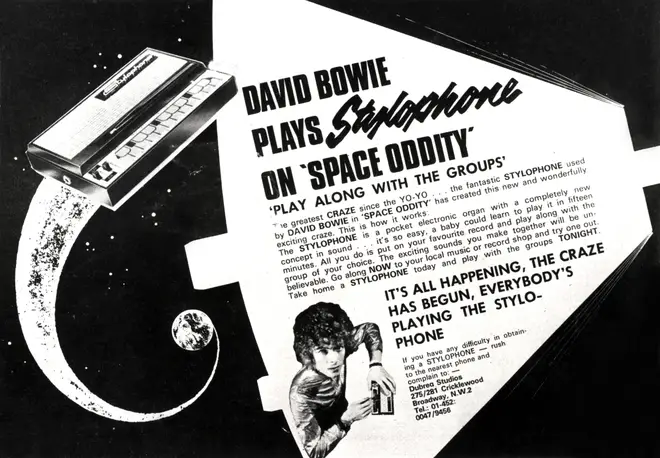
On the new version of Space Oddity, Bowie played the Stylophone - a brand new electronic toy instrument which gave the song a “futuristic” sound. You can hear the Stylophone buzzing low in the track during the first couple of verses.
Produced by Bowie’s long-term collaborator Gus Dudgeon, the remade Space Oddity was a mini-masterpiece: it was dramatic, unusual and very much of its time. It was released on Friday, 11 July 1969 - five days before Apollo 11 was due to set off and land the first man on the moon.

David Bowie - Space Oddity '79
Unfortunately there was some reluctance on the part of the BBC to play a song about a space mission that appears to go wrong: with three astronauts on Apollo 11 taking huge personal risk, the single could have been considered in terrible taste should the moon landing meet disaster. Once the Apollo 11 astronauts returned safely to earth on 23 July 1969, there were no such qualms and Bowie later claimed that the track appeared on some of the BBC coverage of the moonshot.
He later said: "I’m sure they really weren’t listening to the lyric at all. It wasn’t a pleasant thing to juxtapose against a moon landing. Obviously some BBC official said, 'Oh, right then, that space song, Major Tom, blah blah blah, that’ll be great'. 'Um, but he gets stranded in space, sir.' Nobody had the heart to tell the producer that."
However, in commercial terms, the moment had been missed: the single crept into the charts at the end of August 1969 at the lowly position of Number 48. It seemed like Space Oddity was another flop for David Bowie.
Luckily, a very late promotional push for the song in the quiet month of September saw interest in Space Oddity pick up - the single peaked at No 5 on 26 October 1969 and remained on the chart for 13 weeks. Job done! Bowie even recorded an Italian-language version of the song called Ragazzo Solo, Ragazza Sola (“Lonely boy, lonely girl”). It’s a bit weird:

David Bowie - Ragazzo Solo, Ragazza Sola - english lyrics (Lonely Boy, Lonely Girl)
However, the accompanying self-titled album was a commercial failure and Bowie’s follow-up single, The Prettiest Star, in March 1970 failed to make any impression on the charts either. The musician seemed doomed to become a one-hit wonder - that is, until he released an album called The Man Who Sold The World at the end of 1970.
With the release of this album and the follow-up, Hunky Dory, Bowie was well on the way to becoming a genuine superstar. He became rock royalty in 1972 with the album The Rise And Fall Of Ziggy Stardust And The Spiders From Mars - so much so that his American label RCA bought the rights to his old material and reissued Space Oddity in the States. Bowie made a promo film during his Ziggy/Aladdin Sane phase in December 1972 and the single reached Number 15 in the USA at the start of 1973.
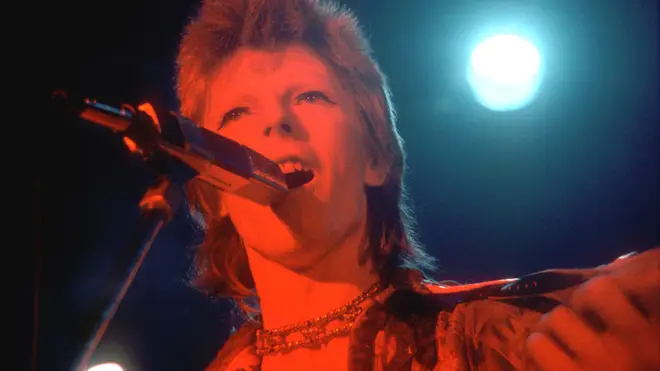
That wasn’t to be the end for Space Oddity, however. In 1975, RCA reissued a stack of “archive” singles by its artists, including Elvis Presley, Harry Nilsson… and David Bowie. Space Oddity was released in the “Maximillion Series” as “3 Golden Oldies For Only 50p!”, in 1975 terms that meant three bangers for the price of two. The other tracks in this bumper package were Changes and Velvet Goldmine.
While Bowie was digging himself into the cocaine-fuelled chaos of his Station To Station album, which was recorded at the end of 1975, pop fans were seeing the old 1972 promo film of him singing a 1969 song. This six-year old “classic” finally made its way to Number 1 in the UK charts for two weeks - a position that would be filled a couple of weeks later by Queen’s legendary Bohemian Rhapsody.
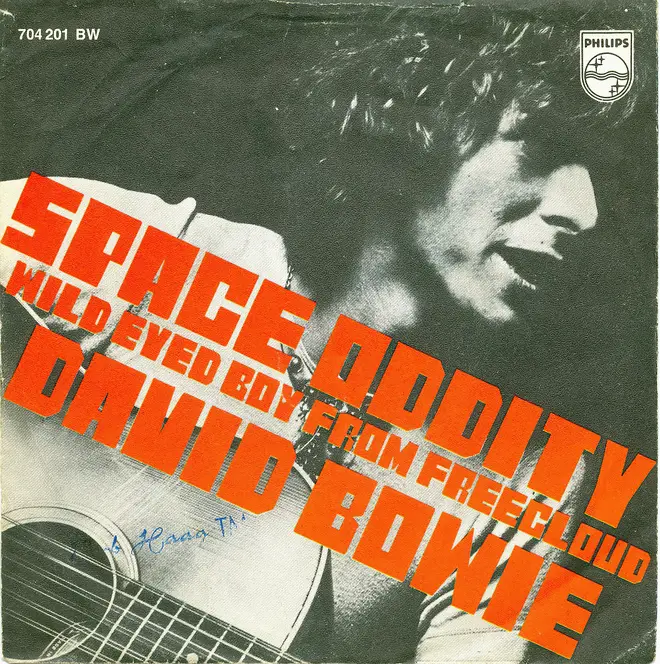
Of course, David Bowie was to re-visit the tale of Major Tom in another Number 1 hit… Ashes To Ashes, in 1980. As for Space Oddity, it lives on over 50 years later... in fact genuine astronaut Commander Chris Hadfield made a video of himself singing the song during a mission on the International Space Station in 2013...

Astronaut Chris Hadfield Breaks Down His 'Space Oddity' Video | Ars Technica